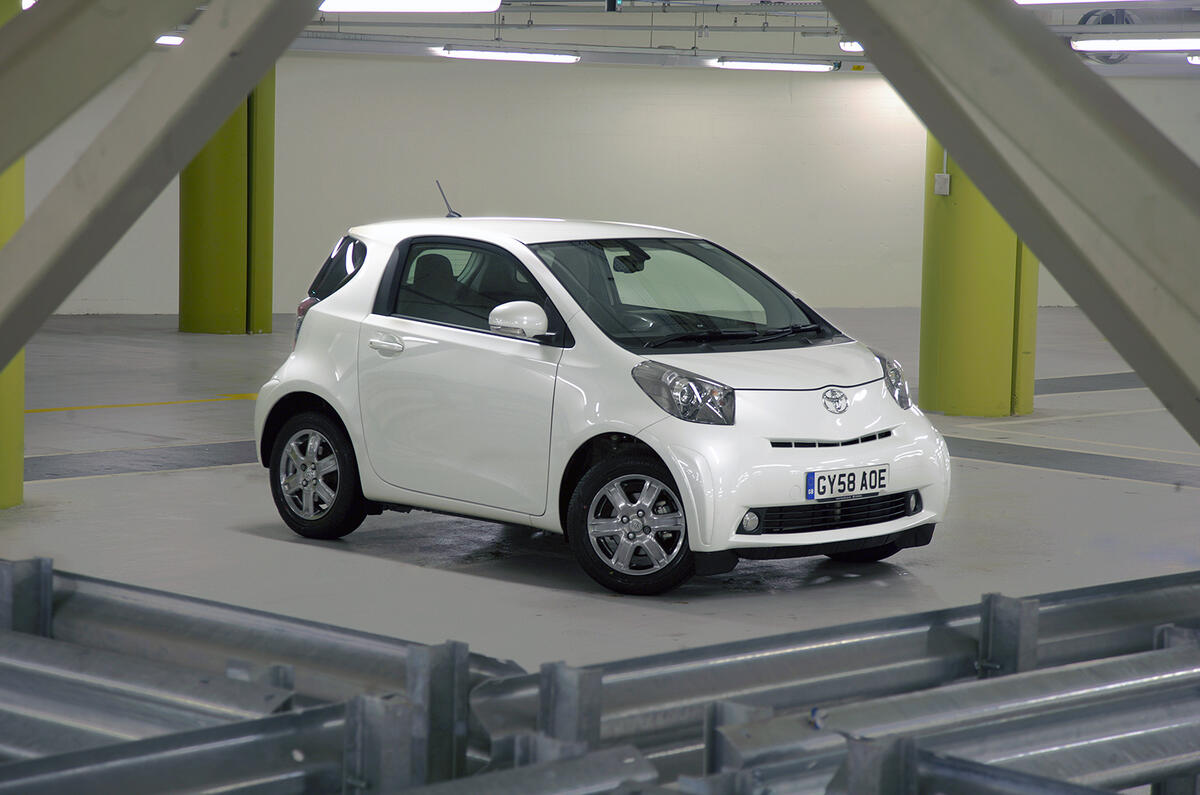It takes a certain confidence to label a product ‘IQ’. You’ll want your buyers swiftly deducing that this is a better kind of thing, an intelligently designed thing that’s superior to others like it. Because if it isn’t, there’ll be plenty of scope for chippy little jokes.
Toyota’s IQ certainly looked different enough to shine a light on the future. It was smaller, taller and shorter than most cars, a little like a Smart ForTwo, but wider besides.
The unusual silhouette was all about packaging, Toyota keen to cram as much air into the IQ’s envelope as feasible. It was actually shorter than a classic Mini at 2985mm to the British car’s 3053mm, but almost a foot wider. A more relevant target for Toyota, though, was to have the IQ occupy the same length as a tiny Japanese kei car, even if it was wider and getting on for two feet longer than the original Smart ForTwo.
There were many more targets too. The IQ was to seat four – not necessarily in the most palatial comfort – pirouette more tightly than a London taxi, properly take a hit in crashes and cut a confident path along motorways. Cramming the solutions to these challenges into a self-propelling box less than three metres long was why it took Toyota five years to develop this car rather than the three it typically needed to realise a conventional supermini.
Novelties included a transmission case positioning the differential ahead of the engine rather than behind it, cutting the IQ’s front overhang appealingly short as well as allowing the front passenger seat to be mounted slightly ahead of the driver’s, to release (slightly) more room in the rear.
Also new were an airbag curtaining rear seat occupants’ heads owing to the equally short overhang at the rear, horizontally mounted rear dampers (an old Peugeot trick that yields more cabin space), a central take-off point for the steering column relative to its rack, a slender under-floor fuel tank, a miniaturised heating and air conditioner and – less radical this – slimmer seats.
There was further boldness in the IQ’s price, which was significantly higher than for most cheap city cars and for plenty of superminis too, buyers compensated not only with the tiny Toyota’s convenience, but an interior sculpted and furnished with considerable panache, especially compared to the plainer-than-porridge cabins of the rest of the company’s range.
The IQ was light enough that a 67bhp 1.0-litre four-pot was adequate for the task, though not light enough to be lighter than a Fiat 500, or to be fast. Blunting its performance still more effectively than a little too much heft, however, was gearing clearly intended to score the IQ fantasy official fuel figures that were nothing like what the labouring engine actually delivered. So the zipping enthusiasm possessed by the best city cars wasn’t quite there.




Join the debate
Add your comment
Having owned one of these I don't think this is a "cult car" in the making. It actually made sure I never bought another Toyota. I previously owned mk1 and mk2 ForTwo's and although the iQ drove a bit better due to its conventional layout it was not as solidly built and didn't even have water guards in the rear wheel arches which made the thing laughably "sloshy" sounding when driven in the rain. Overall completely unmemorable and devoid of any depth of character or real quality. My first and last Toyota product.
Having owned one I do think it will make cult classic status. It's chalk and cheese in terms of build quality and refinement compared with the Aygo, more like a mini-Lexus and definitely worth the premium price. For maximum satisfaction hold each gear to max revs, it will do 40mph in 1st! Turning circle is hilarious. Electric car design should ape this little gem instead of 2 ton road clogging blobs.
Using it as a two seater, which most people will, the boot is actually huge. It's deep and tall and you could fit an undercounter fridge in it without a problem. With 1.3 litre engine this is a quick little car and perfect for city driving. The IQ rivals the A2 for the best little car ever built. No one will ever build a car like this again so a classic today, never mind tomorrow.